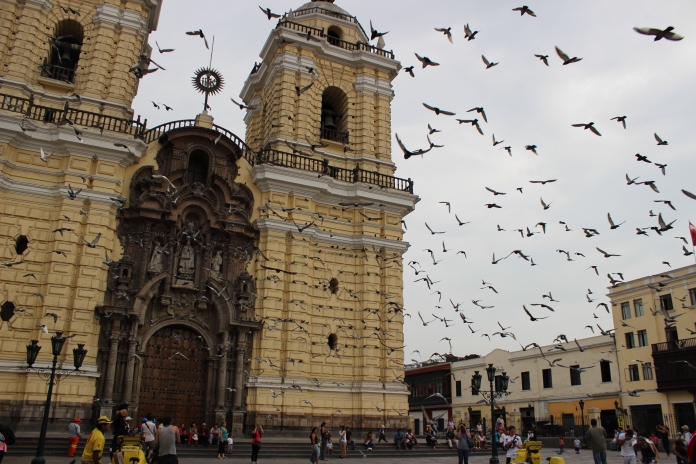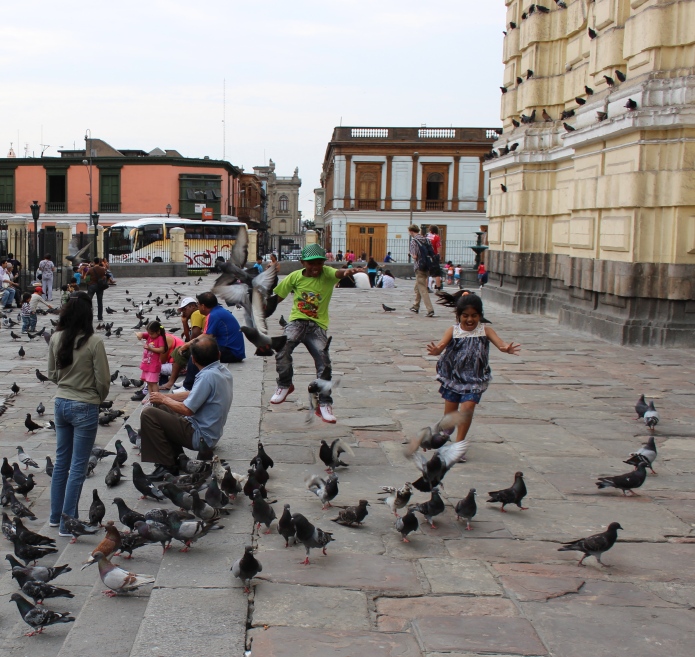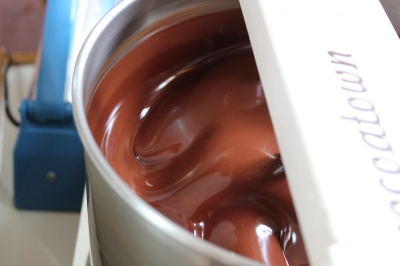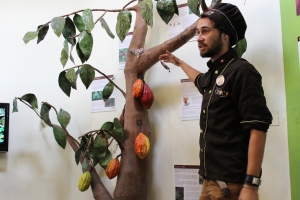When I first walked up to the Convento de San Francisco, or Saint Francis Monastery, I was taken back by the gorgeous Spanish Baroque architecture that seemed to encompass the sky for miles. The design was breathtaking, and as hundreds of pigeons flocked around me I couldn’t seem to take my eyes off the exterior.
I was a little skeptical about going here at first because it had no religious meaning for me, but I did as any good tourist would and took the plunge inside. Let’s not forget it is one of the top 10 things to do in Lima.
I took the English tour with a group of about 30 people. The tour guide was a Latina woman with a strong accent who you could tell had given the same speech one too many times in her life.
The church and convent are part of the Historic Centre of Lima and were consecrated in 1673 and completed in 1774. The structure has survived numerous earthquakes, but much of its interior and exterior had to be restored after a disastrous one in 1970.
For a Catholic, I’m sure one could go on for days about the artwork and the meaning of all the Saints, but for a Jew the religious affiliation did not entice me as much as the beauty and historic composition of the building and its belongings.
My three favorite sights in the monastery:
One of the first stops on the tour was the world-renowned library located in its convent. It possesses about 25,000 antique texts, including the first Spanish dictionary published by the Royal Spanish Academy and a Holy Bible from 1571. We were not able to take pictures, but just being inside, almost close enough to lay a hand on these artifacts, was more than enough for me.
In my opinion, the most amazing piece of artwork throughout the museum was the last supper painted by Diego de la Puente. I was able to find humor in it and the different depiction really caught my attention. Instead of the usual European dishes placed before Jesus, the artist paints typical Peruvian ingredients and meals, like the guinea pig, potatoes and chilies. Something that also shocked me about the painting was the Devil hovering besides Judas. Yes, the Devil!
So if that didn’t lure you in I left the best for last. The catacombs below the monastery are a sight that will leave you speechless. I must warn you to wear comfortable shoes because the chances of you stumbling are likely, and if you’re tall than you might have to get used to walking hunchbacked for a brief time while touring the underground structure, but I can assure you it is all worthwhile. The catacombs were Lima’s first cemetery for Catholics and are located below the monastery. They were discovered in 1943, but as the guide explained there are two more levels of catacombs left unexplored below. The catacombs remained in use until 1808 when a city cemetery outside of Lima was founded, and it is estimated to contain about 70,000 burials. Neatly aligned bones are literally everywhere. From femurs to skulls, nothing is left up to the imagination. It is a grotesque sight to see; yet I was so fascinated by it that I would do it all over again.
You can visit the Convento de San Francisco everyday from 9:30 a.m. to 5:30 p.m. for a small fee of seven soles, or about $2.50. Discounts are available for students and children. And no matter what religion you are, the monastery is a sight to see.





